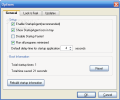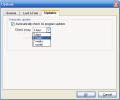How many times have you wondered about your PC’s slow booting and how this can be improved? Shelling out money on new, more powerful hardware is not a solution as, at one point or another, you will get back right where you started. One solution would be managing what loads up with Windows and shortening the list to the strictly essential items. This means that the startup list needs to be taken care of every once in a while, depending on the frequency of software installation.
We all know that Windows is equipped with many services that run at system boot, but not all of us know the exact purpose of each and every one of them. There are services for Internet protocols, application management, network access, remote activity and many more, which are programmed to start at system boot. This happens even with a fresh out-of-the-box operating system and even if you restrain yourself from installing various programs.
And the complicated situation is when you install applications that add services to system boot, such as antivirus programs. The right path, you would say, is to close or remove from the startup list the ones you don’t need. Unfortunately, this activity is limited only to those who know exactly which service does what and are capable of reckoning if it is a necessary service or not. So if you don’t have any experience with this you’d better leave the process alone for now.
The application in test is called Startup Faster! and was designed as a startup manager that can help you easily manage your startup items. It comes with a 21-day trial period and after this you must pay $29.99 for a valid registration key.
We used a clean system for the installation of Startup Faster! and tested it with a few other applications. At the beginning we wanted to cut off the number of startup services Windows XP was running. But Startup Faster! seems to provide no option for this. It does not show a list or some configuration of the services that run on system boot, a feature considered by many users one of the most important in a startup manager, along with the startup item list.
The first application that we installed on the Startup Faster!-ready system was Winamp. We all know that this program has a component called Winamp Agent, which registers itself as a startup object. Although Startup Faster! was running in system tray it did not warn us about any changes made to our startup list. In the provided help file the author says that: “Startup Agent – It stays on the tray to monitor changes to system startup and makes necessary changes.”
By this we understand that, if running, the agent should at least warn you about the changes made to your system startup entry list, not to mention that it could also prevent, deny or block any entries if you so wish.
The main window of Startup Faster! displays a list with all the items from system boot. After finishing the installation of Winamp, a startup item was added to the list: Winamp Agent. The next application that we installed was Kaspersky antivirus. Kaspersky registers itself as a startup object and also adds a few entries to INI services list.
One feature all startup managers should have is “delayed boot time.” It is also present in Startup Faster! and it permits you to set a delay time for application processes to start at system boot.
An important option that Startup Faster! adds is Boot Sequence, which allows you to create a boot sequence from the startup list, meaning that you can set the order of the items. With the use of this feature you can configure which apps should load first and, combined with “delayed boot time,” it can help you set the time interval a process should launch at after boot has been initialized.
This way you can set vital components such as antivirus or firewall to be prioritized during startup and all other processes to follow at user-set time delays. If this configuration is well calculated it will save a lot of time during system boot as well as provide protection to your system right from the moment the OS loads.
Startup Faster! will also allow you to test this configuration by pressing the Test Run button. In this case the applications will start in the order that you have created. For each item you can view a few details like name, parameters, startup location, and even search the Internet for details using the Google button in the Properties corner.
From the Options window of Startup Faster! you will be able to set the user interface transparency level, and the behavior of Startup Agent. By default, the boot delay time between items is 4 seconds but this can also be modified from the Options window. So you will have a default delay time and also a particular one for each item.
 14 DAY TRIAL //
14 DAY TRIAL // 





